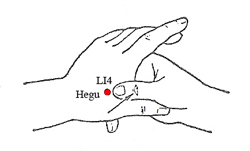 Once you reach the end of your pregnancy, you are probably wondering if every sensation you feel is a contraction. Contractions are the mechanism your body uses to push the baby out of the birth canal. If you are having your first child, you probably do not know what contractions feel like. Understanding more about this sensation can help you determine if you are feeling contractions or if it is time to go to the hospital.
Once you reach the end of your pregnancy, you are probably wondering if every sensation you feel is a contraction. Contractions are the mechanism your body uses to push the baby out of the birth canal. If you are having your first child, you probably do not know what contractions feel like. Understanding more about this sensation can help you determine if you are feeling contractions or if it is time to go to the hospital.
How Do I Know If I'm Having Contractions?
1. Braxton Hicks Contractions
Braxton Hicks contractions do not cause much pain, but the discomfort you feel will be centered in the abdomen where the muscles will tighten. These are practice contractions, but they can also be triggered by sexual or physical activity. Not all women will experience these contractions, but those that do will find that Braxton Hicks contractions are infrequent and can often be managed by changing position or simply waiting them out. These can begin as early as the second trimester, but are much more common in the third.
2. Early Labor Contractions
Early contractions will come at a steady pace and cannot be stopped by changing positions. They will also not let up with time, but will become increasingly more frequent. Steady contractions start as a tightening of the abdominal muscles. They also contain discomfort around the cervix which comes in waves are a sign that your labor is beginning. As your contractions reach 5-10 minutes intervals, you will need to begin to prepare for birth by contacting your doctor or going the hospital as planned.
3. Transitional Labor Contractions
Transitional contractions are often described as a throbbing ache in the abdomen which will make you feel like you want to push or bear down. Some compare this to menstrual pain as well. These contractions will be much more intense than those you felt previously and will come very close together. At this time you will be close to delivering your baby and will need to get the help you had planned with your delivery.
Many women say that the pain of contractions start in the lower back and moves in waves up to the abdomen which will then become rigid, but some find that they only experience pain in their back. The pain of contractions will start out mild, then build up until it eventually subsides.
Want to know more about how to tell if you are having contractions? Check out the video below:
What Can I Do If I'm Having Contractions?
1. Be Patient
You may start having contractions earlier in your third trimester which are not going to impact your cervix or indicate that it is time to go into labor. You do not want to constantly rush to the hospital because you have mistaken false labor for the real thing.
2. Make Note of Contractions
If you have started to feel contractions, make note of how much time passes between them, writing down these intervals along with the strength of the contraction. See if walking around or changing positions affects the type of contractions you feel.If contractions stop on their own or appear at irregular time periods, they are likely false labor pains.
3. Contractions Indicating Labor
Contractions indicating labor will get closer together and become stronger over time. They will not be improved if you walk around or alter your resting position. If your contractions do not follow this pattern, they are probably false labor.
When to See a Doctor
If your contractions are troubling you, do not hesitate to contact your doctor, particularly if you believe you are experiencing preterm labor or your contractions are particularly painful.
Additional signs that you should get medical assistance include:
- Your water breaking or having a green/brown stain
- Contractions falling between 5-10 minutes apart
- Vaginal bleeding
- You are worried about your health or that of your baby
- You are no longer able to walk or talk while contractions occur
- The umbilical cord has slipped into the cervix or vaginal canal






